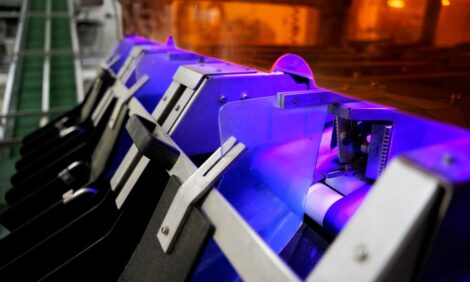



The hatching egg's natural defence against contamination
By Joseph M. Mauldin, Extension Poultry Scientist, University of Georgia, Athens, Georgia. Published by Poultry Science - In recent months it has been noticed that many hatcheries have experienced more contamination, including Salmonella, than usual. In order to better understand how to reduce contamination it is a good idea to review the biology of the egg. There are several natural defenses against contamination that hatching eggs possess and these are reviewed in this Poultry Tip.
Shell: The eggshell provides a barrier for microbes attempting to penetrate the egg. The shell, however, does not offer complete protection. On the average, the eggshell contains about 8,000 pores. Many of the pores are large enough for bacteria to penetrate.
Cuticle: The cuticle is placed on the shell by the hen moments before the egg is laid. The cuticle is a liquid protein coat that dries within minutes after lay. The shell and cuticle together provide a very effective barrier to microbes.
Inner and outer shell membranes: The shell membranes serve to trap bacteria and fungi that have penetrated the shell and cuticle. It is possible to have an embryo developing normally with no contamination even though there are thousands of bacteria growing between the shell membranes. This is not a good situation, however, because the embryo will come in contact with this contamination when it pips through the air cell. Even worse, after hatching all the chicks in the hatcher tray will be exposed to the contaminated membranes and shell fragments.
High pH of albumen: The egg’s albumen has a relatively high pH (around 9) and most bacteria thrive in the pH range of 6-8.
Anti-microbial Enzymes; The albumen contains an enzyme, avidin that has fairly strong antimicrobial properties. The vitelline membrane (yolk membrane), albumen, and chalazae contain lysozime, an enzyme capable of destroying bacteria.
Shell Quality
Shell quality and thickness are two very important factors that affect microbial penetration.
Research has shown that these two factors are more influential on bacterial penetration than is storage time. Sauter and Petersen (1979) demonstrated how much easier it was for irradiated salmonellae to penetrate eggshells with poor quality than eggshells with average or good quality (Table 1).
Notice that after only 30 min. 34 % of the irradiated salmonellae had penetrated the poor quality shell. In the same amount of time average quality shells had 18 % penetration and the good quality shells, only 11%.
| Specific gravity | Shell quality | % After 30 min | % After 60 min | % After 24 hr |
| 1.070 | Poor | 34 | 41 | 54 |
| 1.080 | Average | 18 | 25 | 27 |
| 1.090 | Good | 11 | 16 | 21 |
Methods of hatching egg sanitation
Sanding, wiping, and buffing: Sanding and wiping eggs at collection is a good sanitation practice when not over used. When an egg requires only one or two swipes with sandpaper or cloth then it will be a good hatching egg. When more than two swipes are required to clean the filth from the egg then it should not be included in the hatching egg delivery. Buffing with a table buffer is not recommended because it generally leads to the removal of the egg’s protective cuticle and even some of the shell.
Dust blowers: This is a rarely used but somewhat effective egg sanitation technique. It involves using a leaf blower or air hose to blow the breeder house dust off an entire buggy of hatching eggs. It is remarkable how much dust can be eliminated this way. Blowing off dust from the eggs and buggies would certainly reduce the microbial load arriving at the hatchery.
Hand spraying. The use of hatching egg disinfectants in a hand sprayer has been shown to be effective in sanitizing hatching eggs. Commonly used disinfectants for this purpose include quaternary ammonia, phenols, and hydrogen peroxide. This practice is effective under conditions of heavy contamination but is not recommended for normal, nest-clean hatching eggs. The drawback to this practice is that the disinfectant is generally at room temperature. It would be more effective if the disinfectant temperature would be between 100 and 120 degrees F.
Mechanical hatching egg sanitation. Mechanical hatching egg sanitation is the best, however, most expensive form of sanitation. Research has shown that mechanical hatching egg sanitation will routinely remove more than 99 % of the contamination found on and in hatching eggs (Cox et al., 1994). The mechanical sanitizers use high pressure spraying of hatching eggs from above and below the egg flats with sanitizers in the 115 to 140 degrees F range. Another advantage with mechanical sanitation is that most dirty and floor eggs can be salvaged as hatching eggs.
Microbiological monitoring: Monitor the microbial populations of hatching eggs from every flock periodically (once per month) to maintain quality.
References
Cox, N. A., J. S. Bailey, M. E, Berrang, R. J. Buhr, and J. M. Mauldin, 1994. Automated spray
sanitizing of broiler hatching eggs 3. Total bacteria and coliform recovery after an egg spraying
machine. Journal of Applied Poultry Research. 3:234-237.
Muller, H. D., 1978. Personal communication.
Sauter, E. A. and C. F. Petersen, 1974. Journal of Poultry Science 51:2, 159.
The study is published in the University of Georgia's Poultry Science - Poultry Tips for the Year 2004
Source: University of Georgia - Poultry Science - January 2004










